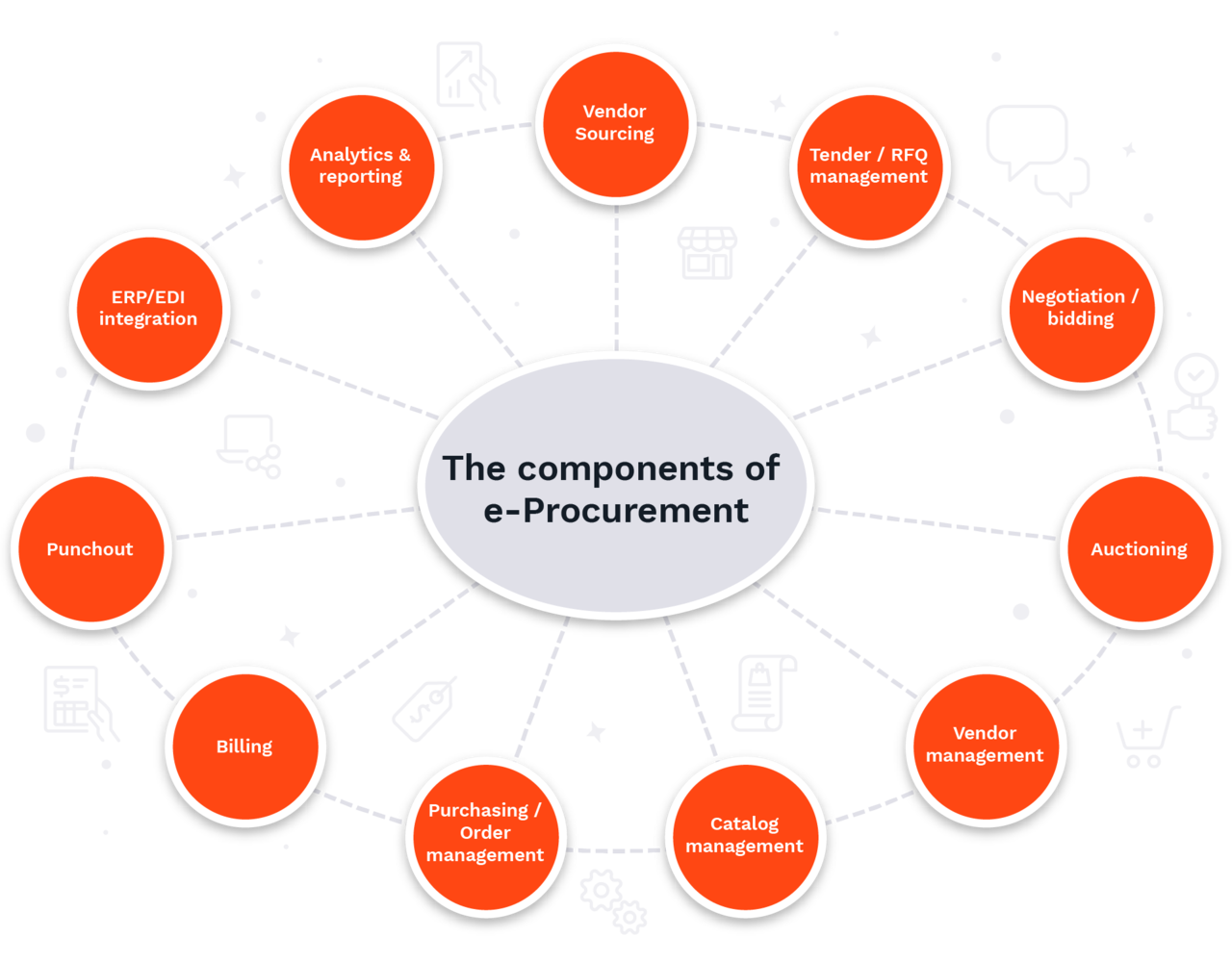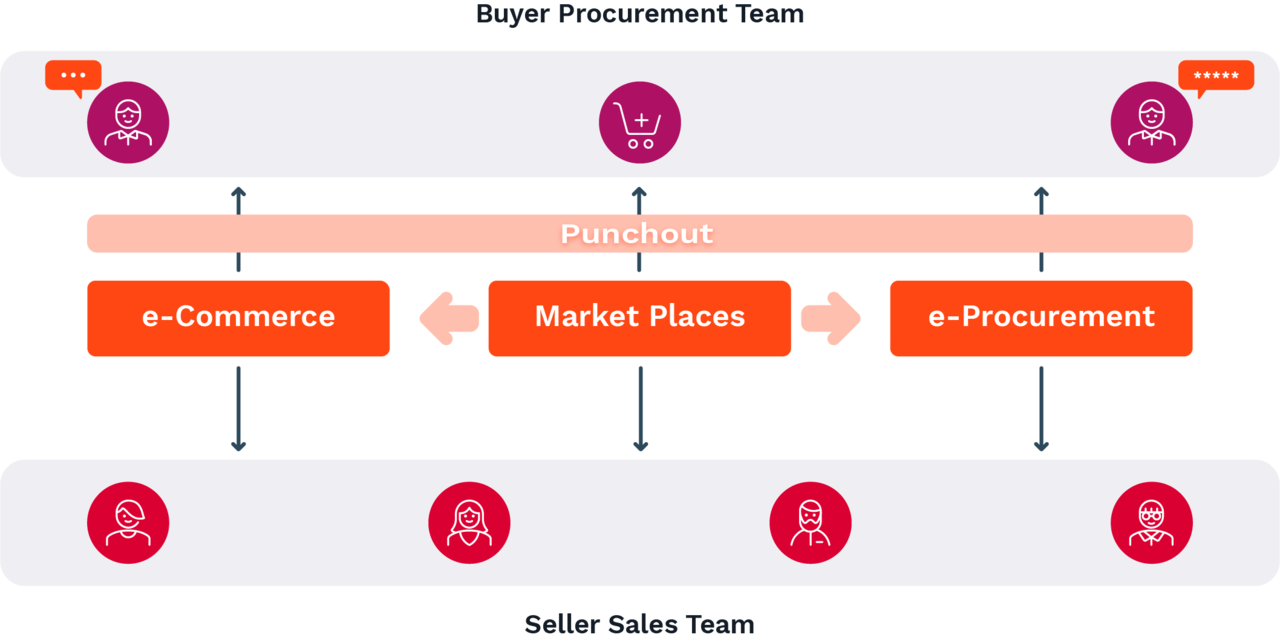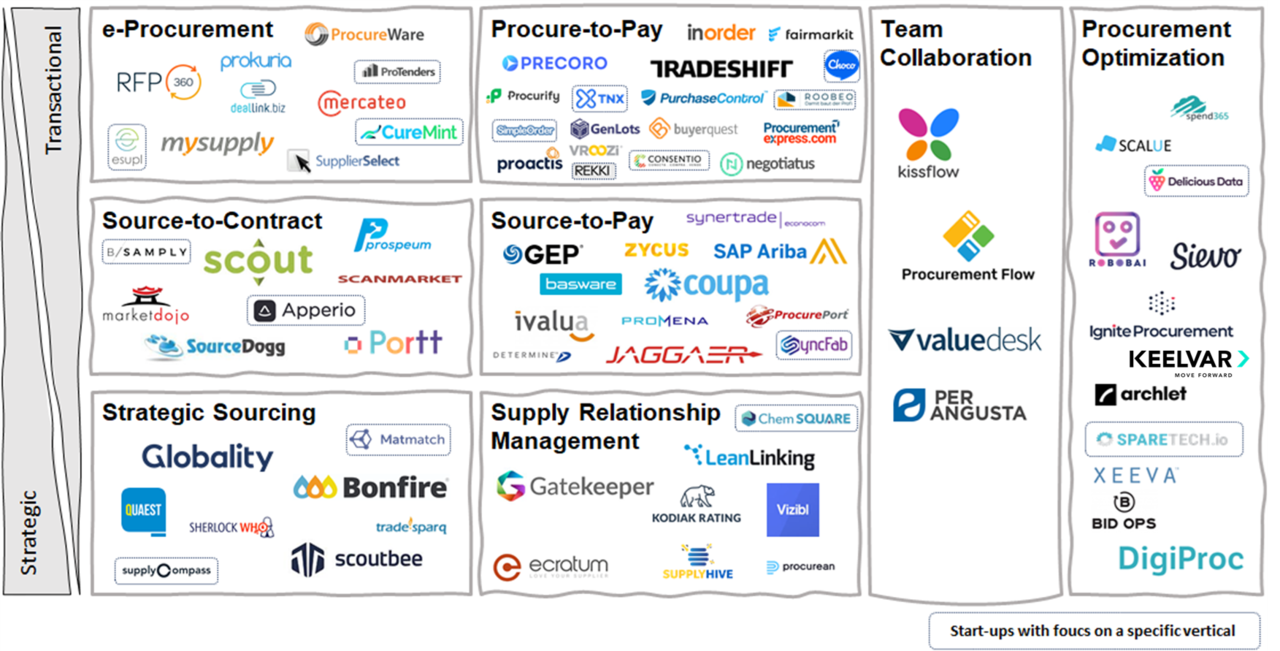B2B procurement platform trends – 2021, a pivotal year
e-Procurement software reaching a pivotal time?
e-Procurement systems have shown tremendous growth and success over the past 20 years, truly helping large buying organizations revolutionize how they purchase from sellers by leveraging the Internet.
They’ve been helping these organizations to streamline their purchasing operations, reducing costs and purchasing cycles, as well as providing analytics and transparency. Needless to say, they also have been helping organizations to operate in a better way during crisis times such as the ongoing Covid-19 pandemic.
Despite this successful track record, it seems clear that e-Procurement as we know it is both changing and challenged, disrupted by other approaches to purchasing. The software market of e-Procurement systems is still a very healthy market, expected to grow year-on-year by approximately 10% for the next five years. However, we are far from the hypergrowth from the early years at the beginning of century (see for instance the trajectory of Ariba before its acquisition by SAP).
More importantly, we see the landscape as subject to significant transformation. Let’s have a quick look at reasons that might explain this state of things.
Designed on outdated requirements?
Very often, procurement systems were designed with the primary goals to optimize efficiency, productivity and reduce costs. The aims of optimizing agility, adaptability and customer experience weren’t typically in the mix. We see a shift of priorities from efficiency to adaptability, especially with the acceleration due to the Covid-19 Pandemic. We also see a shift from productivity to customer experience all along the supply chain…e-Procurement more than ever must permit agile sourcing, adaptable purchasing, and quick on-boarding of new suppliers.
The initial goals of procurement software and its ability to drive a range of tangible benefits across procurement spend and purchasing-related workflows are still valuable for large organizations. But these are not necessarily considered so critical for mid-size companies.
Facing the tough competition of integrated market-places
One of the benefits of procurement systems is that they offer a one-stop shop to explore different suppliers, often vetted and qualified, for a specific need and to optimize sourcing.
This was especially true in early years of e-Procurement systems (2000-2010) as there was no simple way to “centralize” the purchasing from many providers at one single place. This is less true since the advent of B2B marketplaces, which became a very serious alternatives to explore and source products, whether horizontal ones like Amazon, or vertical ones dedicated to a specific industry. They seem to be an attractive solution especially for mid-size enterprises that have not yet broadly adopted procurement systems, which seems still reserved for the largest organization.
Adjusting to the behavioral changes of corporate buyers
User Experience is another area where procurement solutions have been showing resistance. Indeed, the first generation of procurement solutions did not factor in the important of user experience. They’ve been more designed to provide similar experience as your ERP, your Accounting Software or your old bespoke back-office systems, are expecting, derived directly from their experience with modern digital services as consumers.
Although some solutions such as punchout catalogs can help bridge the gap and aim at providing the best of the two worlds that B2B Commerce and eProcurement can offer, they very much look like a work-around and lack standardization. but certainly not the kind of user experience the new generation of buyers, often millennials.
So what’s next for e-Procurement?
In general, procurement systems will have to follow trends we can see in may other parts of the Enterprise Software landscape, and need to transform:
Less monolithic, more composable, from solutions to platforms
They probably will evolve more into a modular set of capabilities that can be used and composed in different ways instead of more monolithic approach to a suite of applications covering the different domains procurement is regrouping (sourcing, purchasing, vendor and contract management, payment and billing, tender management…)
This can already be seen on the market. One among several examples: the Berlin-based company Scoutbee, which focuses solely on the sourcing part of Procurement – “smarter supplier discovery” – raised $60M in series B investment and confirmed the liveliness of the market.
They will follow more of a “platform” approach than an “integrated solution”, and already today, we can see the term “procurement platforms” proliferating instead of “e-procurement” or “procurement systems”.
The Paua Procurement Landscape.
Procurement functions integrated in e-Commerce sites and marketplaces, and vice versa
As a result, we expect to see more and more procurement functions directily integrated into e-Commerce and Marketplaces, using modern integration. Headless Procurement System as a new trend? Probably not, but Headless Capabilities in your Procurement System, absolutely!
Examples include the ways buyers can access their procurement functions directly from the website or the marketplace (prepare a purchase order, request approval from another service, add to a wishlist for other buyers…). In many ways, the Punchout technique is a first step in that direction.
And similarly, we‘ll see an increase of enrichment of the experience in the procurement system from content and data coming from the B2B Commerce side.
Typically, a user that gets recommended product and access contextual product information in the procurement system triggered by its activity on a website, could then access his historical navigation and continue his journey jumping from Web to Procurement in a truly omni-channel fashion.
Integrating Ibexa with the future of Procurement systems
At Ibexa, we develop a Commerce-ready Digital Experience Platform (DXP) for B2B companies to digitalize their sales strategy. One important and key capability of our platform is its ability to integrate with any systems to enable our customers to truly take an agile and progressive approach to build their solutions and make them evolve, without implying significant development and heavy investment.
Our Product Team is working hard on exploring how to integrate the systems of today and tomorrow, working with technology partners to invent new ways for our customers to integrate and compose their digital enterprises. Stay tuned on our blog for future updates and as ever, feel free to connect with us if you have any questions or if you would like to share your views on the future of procurement systems and how Ibexa should integrate it!
Businesses need DXPs to respond to change, and to invent the disruption of tomorrow
The Three Pillars of Successful B2B Digital Transformation
B2Bs have to be bold and inventive to disrupt their own business models, read how to be successful in our eBook. If you are struggling with your B2B digital transformation efforts, why not reach out to us to discuss your project.




